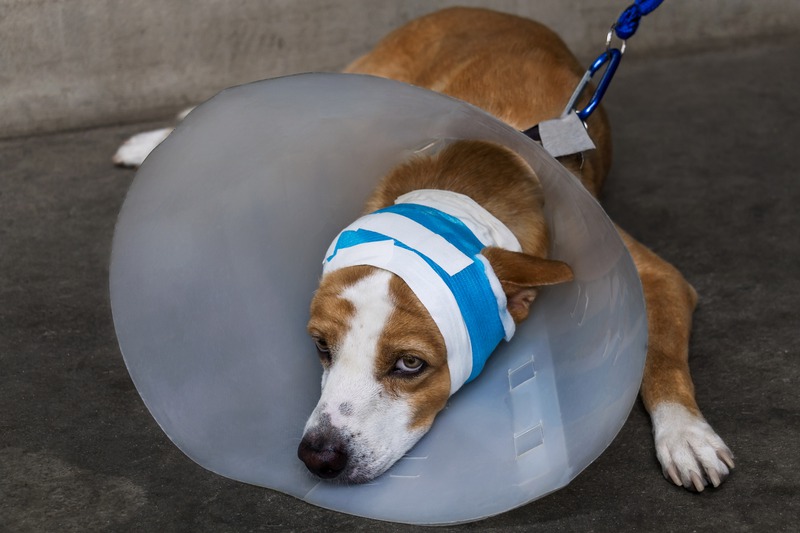When our furry friends fall ill or get injured, it can be a stressful time for any pet owner. One critical decision that might come up is whether your pet needs surgery. You might wonder how veterinarians conclude that surgery is the best option. You’re not alone, and understanding the process can ease some of that worry. Let’s explore the actions and considerations vets take before they decide that surgery is necessary.
1. Recognizing the Signs That Could Indicate Surgery
First things first, you might notice signs at home that suggest your pet isn’t feeling well, such as changes in behavior, eating habits, or unusual physical symptoms. While not all issues require surgical intervention, some serious conditions do. Vets start by looking at symptoms such as:
-
Chronic pain that doesn’t respond to medication
-
Difficulty breathing or persistent cough
-
Abnormal lumps or bumps on or under the skin
-
Signs of severe injury or trauma.
These signs prompt vets to consider further diagnostic tests to determine the underlying issue.
2. Conducting Thorough Examinations and Tests
Vets use a combination of physical examinations and diagnostic tests to get a complete picture of your pet’s health. During exams, they’ll look at your pet’s overall physical condition, checking for anything out of the ordinary. They’ll pay close attention to how your pet responds to certain touches or movements, which can give clues about what’s happening inside.
Diagnostic tests play a crucial role in decision-making. Here’s what vets might use:
-
Bloodwork to assess organ function and detect infections
-
X-rays for a look at bones and certain organs
-
Ultrasound for a better view of soft tissues
-
Biopsies to examine tissue samples when cancer is suspected.
This information is critical to pinpoint the condition causing your pet’s symptoms.
3. Considering Non-surgical Alternatives
Surgery isn’t the only option, and vets explore all possible treatments. They consider factors like age, overall health, and the potential for recovery with non-surgical methods. Treatments are always tailored to your pet’s specific needs, with options such as:
-
Medication for pain relief or to fight infections
-
Physiotherapy for healing injuries
-
Dietary changes for weight management or to address dietary sensitivities
-
Behavioral therapies for issues influenced by psychological factors.
If these methods aren’t effective or if the condition is life-threatening, then surgery may become the preferred option.
If you’re in a situation that requires specialized care for your pet, you should make an appointment with a veterinary specialist. This specialist can work closely with your primary vet to ensure your pet gets the best possible treatment plan.
4. Evaluating the Risks and Benefits of Surgery
Like with any surgical procedure, there are risks involved. Vets weigh these risks against the potential benefits. They’ll consider:
-
Your pet’s age and overall health status
-
The severity and progression of the disease or condition
-
The likelihood of complications during and after surgery
-
Chance of a full recovery with surgery versus without it.
In some instances, surgery can’t wait. If your pet is involved in an accident or suffers a sudden, severe illness, you might need the services of an emergency veterinarian. These dedicated professionals work around the clock, ready to handle any crises that arise with pets after hours. Their expertise means they’re equipped to perform emergency surgeries whenever necessary, providing life-saving interventions when every minute counts.
5. Making the Decision Together
Your vet will discuss all the findings and treatment options with you. It’s a collaborative process, and you’re an integral part of your pet’s healthcare team.
When non-surgical options have been ruled out, and your vet has determined that surgery is the best course of action, it’s important to educate yourself on what’s to come. In this scenario, understanding what pet surgery in Bonita Springs entails can be incredibly helpful. It’s not just about the surgery itself but also encompasses pre-operative preparation and post-operative care, which are both essential to the success of your pet’s surgery and recovery.
Preparing for Your Pet’s Surgery
Once the need for surgery is established, preparation begins. Your vet will provide you with specific instructions based on the type of surgery. These will likely include:
-
Fasting before the procedure to reduce anesthesia risks
-
Adjusting current medication schedules
-
Guidelines on bathing and preparing the surgical area.
It is also essential to discuss the anesthetic protocol as pet owners often have concerns about anesthesia risks, especially in older pets. Vets use the latest techniques and monitor pets closely throughout surgery to mitigate these risks.
The Day of the Surgery
The day of the surgery can be nerve-wracking, but you can trust that your pet is in good hands. Your veterinary team will ensure your pet’s safety and comfort from the moment you arrive at the clinic throughout the surgery and during the initial recovery period.
Post-surgery and Recovery
After surgery, your vet will give you detailed instructions for home care, which may include:
-
Managing pain with prescribed medication
-
Limiting activity to ensure proper healing
-
Monitoring the surgery site for signs of infection or complications
-
Scheduled follow-up appointments to check on recovery progress.
The success of the surgery isn’t just in the procedure itself but also in the dedicated care and attention during the recovery period.
Final Thoughts
Determining if a pet needs surgery is a multifaceted process that hinges on meticulous examinations, diagnostic tests, and a thorough assessment of all possible treatment options. It involves a collaborative relationship between you, your vet, and sometimes, a veterinary specialist. Remember that you’re not alone, and with the right information and support, you can help ensure your pet receives the best care possible.

